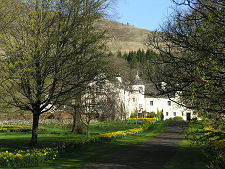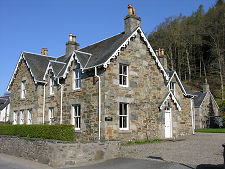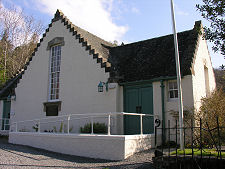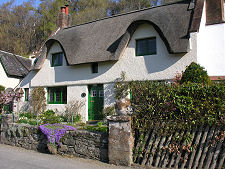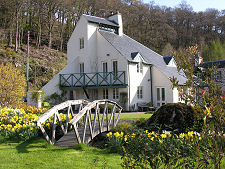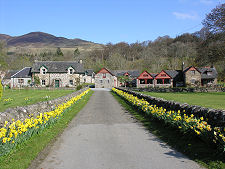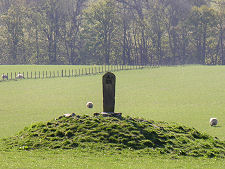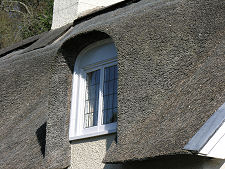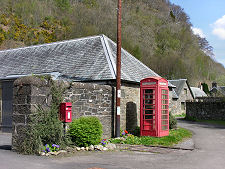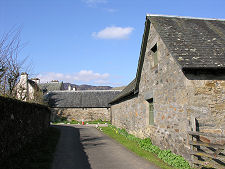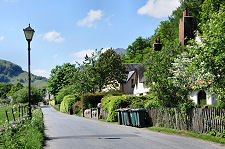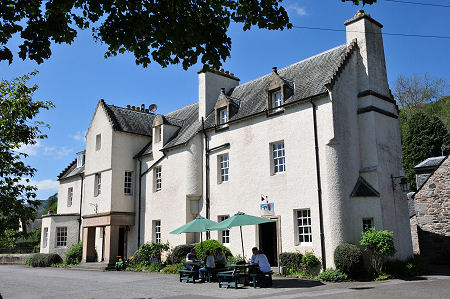 The Fortingall Hotel |
Fortingall is an outstandingly attractive village some seven miles west of Aberfeldy. It stands a little to the north of the River Lyon not far from where it gushes out of the steep sided rocky jaws of Glen Lyon.
The village as you see it today is largely due to the efforts of Sir Donald Currie, a shipping magnate from Greenock who became MP for Perthshire and purchased the Glenlyon Estate, including the existing village of Fortingall, in 1885. Sir Donald engaged the Arts & Crafts architect James MacLaren to transform what by some accounts was a semi derelict village into something more in keeping with his ambitions for the estate.
MacLaren started with a z-shaped arrangement of cottages close to the old inn in the village. These emerged as Kirkton Cottages: and with their white painted exteriors and beautiful reed-thatched roofs they continue to set the theme for the village today. MacLaren died at the early age of 37 in 1890, but his work in Fortingall was carried on by his partners William Dunn and Robert Watson.
Dunn & Watson's first major contribution was to rebuild the old inn virtually from scratch as the Fortingall Hotel in 1891. The result is a superb building, with themes that would later be picked up by better known architects like Charles Rennie Mackintosh, but which still carried echoes of the traditional design of Scottish tower houses and castles. The hotel remains at the heart of the village today, and offers excellent food and accommodation, and a cosy bar. While work was underway on the hotel at one end of the village, Dunn & Watson also oversaw the remodelling of Glenlyon House, Sir Donald Currie's Perthshire residence, at the other end of the village. This had started life as an L-plan tower house in 1694 and been extended in 1728. (Continues below image...)
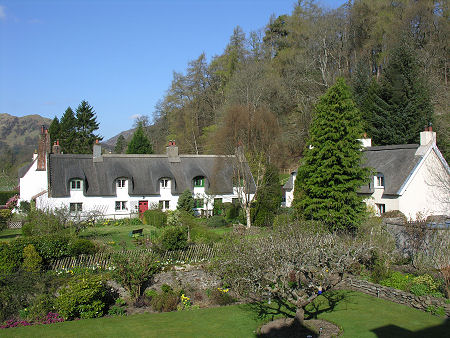 Kirkton Cottages |
Between 1900 and 1902 Dunn & Watson oversaw the rebuilding of Fortingall Church, on a site that had been used for Christian worship since the end of the 600s: again the result was outstanding. Other cottages and houses followed in the village, all very much in keeping with the overall look and feel. Dunn & Watson's practice was taken over on their retirement by William Curtis Green, whose main contribution to Fortingall was the village hall, built in 1936. More recent additions to the village, such as the Dial House built in 2000, are very much in keeping with earlier building.
But while the appearance of today's village dates back not much more than a century, the village itself is far, far older. At the corner of Fortingall Church is the Fortingall Yew, believed to be 5,000 years old and quite possibly the oldest living thing on Earth. The village and surrounding landscape carry signs that there were people living here when the yew was only a sapling, including a cairn from the Stone Age and, later monuments from the Bronze Age.
Rather later still, there is a persistent story that Pontius Pilate was born in Fortingall. This story was set out most fully in an article published in the New York Times on 15 January 1899. It seems that between the Romans' first incursion into Britain and their later invasion, Caesar Augustus dispatched envoys to establish diplomatic relations with some of the important British and Caledonian chieftains. These included a Caledonian chieftain called Metellanus, whose stronghold was at the head of Glen Lyon. A member of the Roman delegation to Metellanus's tribe fathered a child with a Caledonian woman, and this child subsequently returned to Rome with his father (and, possibly, his mother), and was brought up as Pontius Pilate.
As there appears to be no clear record of the circumstances of Pilate's parentage or birth, this story seems at least as likely as alternatives that would have him born in Tarragona in Spain or Forchheim in Germany. And if he was born in Fortingall, that would make him only the first of very many Scots who throughout history have travelled abroad to achieve high office in the service of other people's empires.
Rather more widely accepted is Fortingall's role as an important early Christian centre. Adomnán, Abbot of Iona from 679 to 704 is believed to have visited Fortingall and there certainly seems to have been a very early monastery standing on or close to the site of today's church. A relic of this monastery, in the form of a hand bell dating from the 600s, is on view in a niche in the church.
In the 1300s the village was all but wiped out by the Black Death. A standing stone a little south of the road through the village opposite the hotel is known as Carn na Marbh or "Cairn of the Dead" and is believed to mark the site of the mass grave in which the villagers were buried by the only survivor, an old woman. After the Reformation, Fortingall became part of a parish measuring over 300 square miles. The village church in use at the time was extended in 1786 and again in 1850, before being replaced between 1900 and 1902.
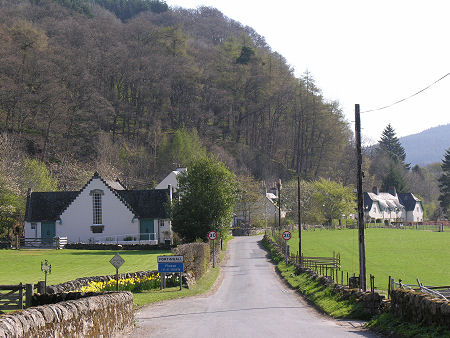 Approaching Fortingall from the West, with the Village Hall on the Left |
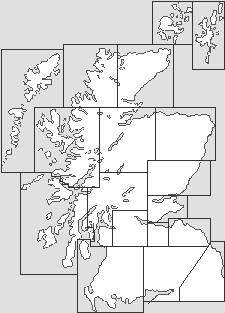
|
|
|
Visitor InformationView Location on MapWhat3Words Location: ///built.quicker.grants |
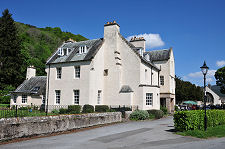 Another View of the Hotel |
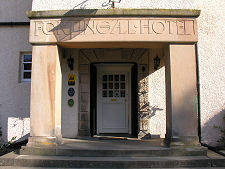 Doorway of the Fortingall Hotel |
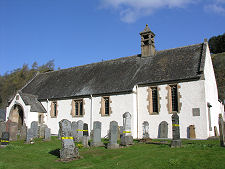 Fortingall Church |
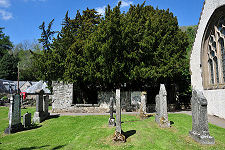 The Fortingall Yew |
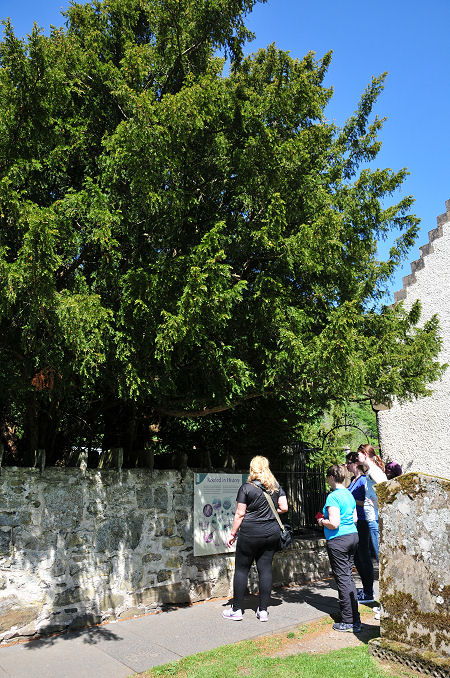 Visiting the Yew |
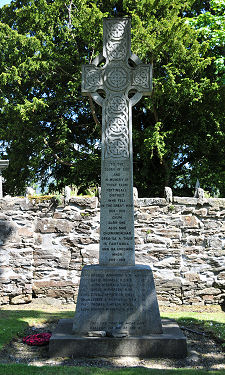 The War Memorial |
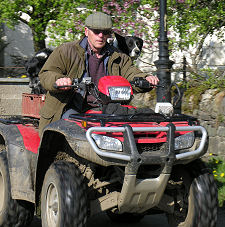 Have Dogs, Will Travel |
